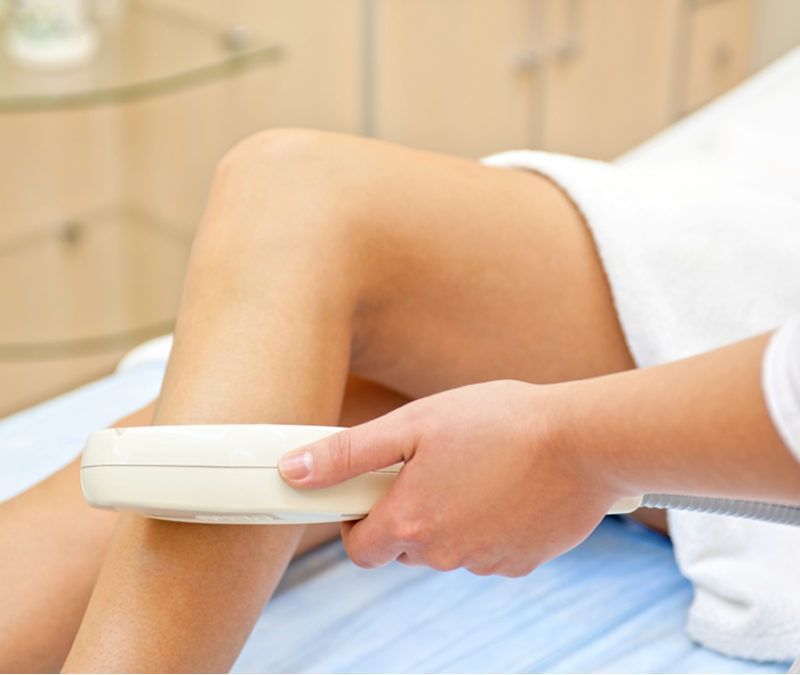Laser hair removal is contraindicated in certain cases, such as for patients with vitiligo or psoriasis, and of course, during pregnancy. The reason: it causes changes to pigmentation, potentially causing the destruction of the melanocytes.
Laser hair removal is based on the destruction of the pilous bulb, in other words, the hair root. The laser attacks the place where there is pigmentation, targeting the melanin. To do this, a light is emitted with a suitable wavelength to cause significant absorption by the melanin, whilst leaving the rest of the skin unaffected and undamaged.
The light energy emitted is absorbed by the melanin present in the hair, and is transformed into heat, thus destroying the hair from the root.
In the case of vitiligo, the hair acts as a stimulant for the melanocytes in its root. Laser hair removal therefore strengthens the destruction of the melanocytes, the key to the future re-pigmentation of de-pigmented areas caused by vitiligo. This is why vitiligo patients should clearly not opt for laser hair removal.
Yet this is not only true for cases of vitiligo. Laser hair removal is also not recommended for people with psoriasis or coagulation disorders, as well as in cases of hirsutism (excessive body hair), herpes viral infections, hypertrophic scarring, and of course during pregnancy.
Regarding vitiligo, one of the adverse effects reported after using laser hair removal, is the alteration of the skin pigmentation(*). Furthermore, at Medline we found the case of a patient who developed vitiligo after intense pulsed light treatment to de-pigment facial lentiginosis injuries(**).
* Haedersdal M, Gøtzsche PC. Depilación con láser y fotodepilación para el crecimiento de vello no deseado(Revisión Cochrane traducida). En: La Biblioteca Cochrane Plus,2008 Número 4. Oxford: Update Software Ltd. Disponible en:http://www.update-software.com. (Traducida de The Cochrane Library,2008 Issue 3. Chichester,UK: John Wiley & Sons, Ltd.) [Consulta: 19/01/2011]
Agence d’évaluation des technologies et des modes d’intervention en santé (AETMIS). Utilisation des lasers de classe 3b et 4 et de la lumière intense pulsée à des fins esthétiques dans un contexte non médical. Rapport préparé par Sylvie Beauchamp, Alicia Framarin et Jean-Marie R. Lance. ETMIS 2008;4(4):1-77.[Consulta: 19/01/2011]
** Shin JU, Roh MR, Lee JH. Vitiligo following intense pulsed light treatment. J Dermatol. 2010 Jul;37(7):674-6.[Consulta: 19/01/2011]

